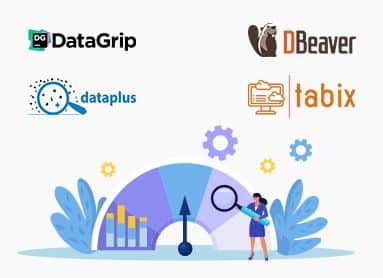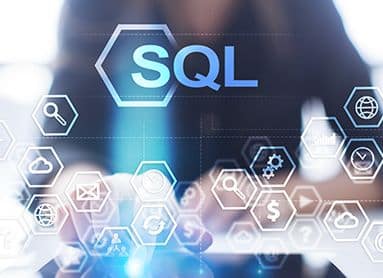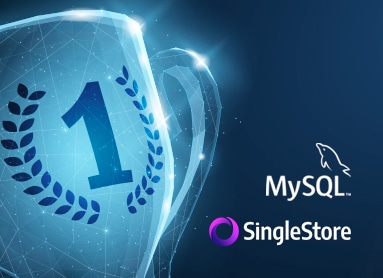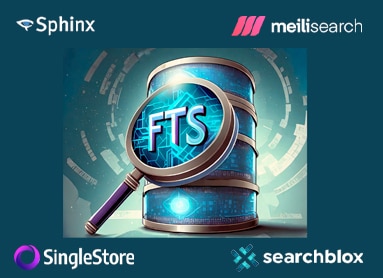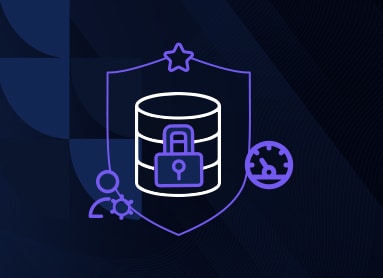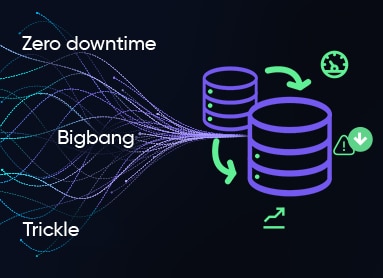Embarking on a relational databases migration strategy journey can be daunting and fraught with challenges and risks. Yet, when executed correctly, it can pave the way for improved performance, scalability, and cost savings. So, how can you ensure a smooth and successful migration? By understanding the importance of a well-planned strategy and adhering to best practices. In this blog post, we’ll explore the different types of relational database migration strategies, critical components of a successful migration plan, and best practices to help you confidently tackle this complex process.
Database Migration Strategy Key Takeaways
A comprehensive understanding of database migration strategies is essential for successful data transfers.
Database migrations present challenges such as compatibility issues and data corruption, which can be addressed with proper planning and testing.
A successful migration plan includes evaluating existing environments, assessing team skills & capabilities, selecting suitable tools, adhering to best practices for cleansing/reclassification & schema rebuilding, and validating migrations.
Understanding Relational Database Migrations
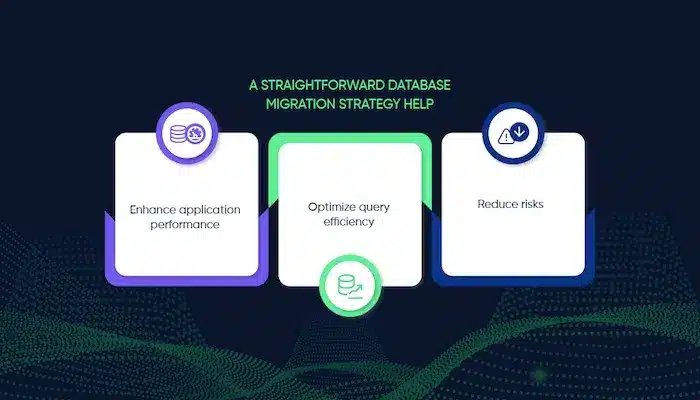
Database migration is essential to modern IT operations as organizations constantly evolve to meet ever-changing business requirements. A straightforward database migration strategy helps enhance application performance, optimize query efficiency, reduce risks, and ensure successful data migration. However, the migration process is often fraught with challenges like compatibility issues, data corruption, and maintaining data consistency.
Various types of relational database migration strategies have been developed to overcome these challenges, including Big Bang Migration, Trickle Migration, and Zero-Downtime Migration. When combined with a robust migration plan, these strategies can help organizations execute seamless migrations and reap the benefits of improved database management.
The importance of database migrations
Minimizing business impact, especially when transitioning from on-premises data centers to cloud-based solutions, necessitates a well-devised database migration strategy. Homogeneous migrations involve transferring data between the same database technologies. In contrast, heterogeneous migrations entail moving data between different database technologies, such as from an on-premises database to a cloud provider’s database service.
A successful database migration critically depends on identifying core data requirements and preventing unnecessary data transfer to the new system. This guarantees data integrity and helps avoid potential issues from migrating data from disparate schemas.
Challenges in database migrations
During database migrations, organizations often encounter challenges such as compatibility issues between data formats of the old and new systems, technical problems like network connectivity issues, and data corruption. To mitigate these challenges, best practices should be followed, like using managed file transfer tools with multiple failovers and automation, validating data formats, and performing thorough testing and validation.
Maintaining data consistency during a database migration presents challenges, including inadequate planning, data integrity compromises due to poor data mapping, and risk of data loss or business disruptions. Adhering to a well-structured strategy allows organizations to overcome these challenges and facilitate a smooth migration process.
Types of Relational Database Migration Strategies

This section will delve deeper into the three primary database migration strategies: Big Bang, Trickle, and Zero-Downtime migrations. Each approach offers unique advantages and limitations, depending on an organization’s specific needs and requirements. Grasping the differences between these strategies equips you to decide on the optimal plan for your database migration project.
Big Bang Migration Strategy
Big Bang Migration is a process of simultaneously moving all data from the source system to the target database. It is typically done within a particular timeline. This approach offers simplicity in implementation, as it involves a straightforward data transfer. However, the primary tradeoff is extended downtime, which may not be feasible for organizations that require continuous system operation.
A Big Bang Migration is best suited to small organizations or those that do not need real-time data as part of their regular operations. Despite its potential drawbacks, when executed properly, a Big Bang Migration can ensure a complete and accurate data transfer from the legacy system to the target system within a predefined timeframe.
Trickle Migration Strategy
On the other hand, Trickle Migration breaks down the migration process into smaller sub-migrations, transferring data in smaller increments. This approach follows an agile-type methodology, allowing for easier confirmation of the success of each phase. While Trickle Migration is typically more time-consuming than other strategies, it minimizes the risk of unexpected failures in database migration by allowing any issues to be identified and rectified early on.
The steps involved in Trickle Migration include:
Planning
Preparation
Design
Execution
Testing
Maintenance
This approach requires more resources and effort than a Big Bang Migration, as it necessitates running two systems concurrently. However, its phased implementation ensures a more controlled and manageable migration process.
Zero-Downtime Migration Strategy
Zero-downtime migration is a process that replicates data from the source database to the target database while allowing for uninterrupted access and operation on the source database. This strategy is particularly advantageous for organizations that require continuous system operation and minimal disruption to their business processes.
Executing a zero-downtime migration involves the following steps:
Carefully planning the migration
Leveraging production traffic
Dividing the migration into cohorts
Allowing the application to write data to both databases during the migration
Validating the migrated data
By following these steps, organizations can ensure a seamless migration process with minimal downtime and disruptions.
Key Components of a Successful Migration Plan

A successful migration plan involves:
Evaluating the existing data environment
Assessing internal team skills and capabilities
Selecting suitable migration tools for the specific database management systems
Adhering to best practices for data cleansing and reclassification
Reconstructing database schema
Testing and validating migrations
This section will explore these key components to help you create a robust and effective migration plan.
Assessing current data environment
Understanding the challenges and complexities involved in the migration process requires a comprehensive assessment of the current data environment when preparing for a database migration.
Key factors to consider include:
Evaluating the size of databases
Assessing the cloud-compatibility of applications
Identifying mission-critical databases and apps
Considering any applicable compliance requirements
Considering these factors is crucial in this stage of the migration process.
There are several tools available to evaluate the existing data environment for database migration, such as:
Fivetran
Snaplogic
Stitch Data
AWS Migration
DBConvert Studio
Data Migration Assistant (DMA)
Oracle SQL Developer
MySQL Workbench
pgAdmin III
By thoroughly assessing the current environment, organizations can identify any critical risk factors and dependencies and create a workable timeline for the migration process.
Evaluating internal team skills and expertise
Another pivotal aspect of a successful migration plan is evaluating the internal team’s skills and expertise. By assessing the technical proficiency of your team, you can identify areas where team members require additional training or help, ensuring effective resource allocation during migration.
Several training programs and courses are available for upskilling team members in database migration, such as AWS knowledge-sharing sessions, Skillsoft’s cloud training solutions, and online courses and certifications. It’s essential to assess your team’s specific needs and choose the training program or method that best aligns with them.
Another possible solution is hiring a database consulting company with experience with database migration.
Selecting appropriate migration tools
For processes such as data transformation, error detection, and data cleansing to be automated, it’s essential to select the correct migration tools. When choosing a migration tool, factors such as:
functionality
scalability
compatibility
ease of use
reliability
support and documentation
cost
security
should be considered.
Some of the highest-rated tools for relational database migrations include:
DBConvert Studio
Hevo Data
MySQL Workbench
Navicat for MySQL
Evolve
Data Puppy Lite
Liquibase
Dbmate
gitSQL
Organizations can streamline migration by selecting the appropriate tools and ensuring a successful outcome.
Best Practices for Relational Database Migrations

Following best practices is vital for guaranteeing a successful and efficient database migration. This section will explore some critical best practices for relational database migrations, such as data cleansing and reclassification, rebuilding database schema, and testing and validating migrations. Organizations can overcome potential challenges by following these practices and ensuring a smooth migration process.
Data cleansing and reclassification
Data cleansing and reclassification are essential for a successful database migration to ensure data quality and usefulness. The steps involved in data cleansing include the following:
Identifying incomplete, incorrect, inaccurate, and irrelevant data
Replacing incorrect data with accurate data
Deleting unnecessary data
Standardizing and validating data
Deduplicating data
Analyzing data quality
Following these approaches, organizations can enhance data quality and guarantee a seamless data migration process.
On the other hand, data reclassification is crucial for enhancing data quality, simplifying the process of bringing data into the system and enabling precise data mapping between the source and target databases. By reviewing and reclassifying data before migration, organizations can ensure the integrity of existing security and compliance controls and meet any legal requirements to hold, retain, or keep certain records on-prem.
Rebuilding database schema
Rebuilding the database schema is a vital part of the migration process. It involves:
Transforming the existing data schema to one that is compatible with the new database
Constructing tables
Scripting functions such as stored procedures and database triggers
This step is essential for ensuring the migrated data is appropriately structured and organized in the new database system.
The steps involved in converting the current schema to the new one during database migration include:
Assessing the current data environment
Designing the new schema
Constructing a migration plan that outlines the sequence of schema changes
Backing up the existing database
Executing the migration plan
Validating the success of the schema migration
Updating any applications or processes that depend on the database
By following these steps, organizations can ensure a successful schema migration and prevent potential issues such as data loss or corruption.
Testing and validating migrations
Thoroughly testing and validating migrations is essential to ensure a successful database migration. By utilizing a staging environment that closely resembles the production environment, developers can test the database migrations in a realistic setting before deployment. This helps to identify and resolve any potential issues or conflicts before they impact the production database, thus ensuring the successful execution of database migrations without disruption to the live system.
Migration tools that can be utilized for testing database migrations include:
DBConvert Studio
AWS Database Migration Service
Microsoft SQL Server Migration Assistant
Oracle Data Migration
Informatica PowerCenter
Talend
SAP Data Services
Hevo Data
Fivetran
Matillion
Stitch Data
IRI NextForm
Dbmate
QuerySurge
By employing these tools, organizations can automate the testing process, guarantee data integrity, and ensure that the migration process adheres to best practices.
Managing Security and Access Privileges in Database Migrations

Given the paramount importance of data security, managing security and access privileges during database migrations is necessary to avoid breaches and secure data protection. In this section, we will discuss migrating access privileges to maintain proper authorization and access control in the new database environment, as well as implementing security measures to protect migrated data and comply with relevant regulations and standards.
Migrating access privileges
Migrating access privileges, especially when migrating databases, involves transferring or moving the permissions and privileges associated with user accounts or roles from one database system to another. This ensures that users in the new database system have the same access and permissions as they did in the original database system.
To successfully migrate access privileges, organizations should follow a well-defined strategy that includes the following steps:
Identify users and roles in the original database system.
Map the privileges associated with each user and role.
Transfer the user permissions to the new database system.
Test the migrated privileges to ensure they are working correctly.
Organizations can ensure a smooth and secure migration process by following this strategy.
Typical strategies for migrating access privileges in a relational database involve:
Granting and revoking privileges at the database level
Mapping access privileges from the source database to the target database
Implementing security policies and authentication mechanisms
Auditing and monitoring access privileges
By following these practices, organizations can ensure proper access control and maintain compliance with relevant regulations and standards.
Securing migrated data
Implementing security measures to protect migrated data is crucial for ensuring data protection and compliance with relevant regulations and standards. Some common measures include:
Assessing security risks and vulnerabilities of the data during migration
Designing and implementing appropriate security measures, such as encryption and access controls
Validating and cleaning the data to ensure its integrity and accuracy
Using database migration tools that provide secure data transfer
Additionally, enabling features like Always Encrypted for the destination database connection and considering using cloud services like AWS Database Migration Service or Alibaba Cloud Data Transmission Service, which provide secure data migration capabilities, can further enhance the security of migrated data. By implementing these security measures, organizations can safeguard their data during migration and ensure compliance with applicable regulations.
Case Study: Successful Relational Database Migration

This case study, exploring a successful relational database migration, underscores the significance of meticulous planning and sticking to best practices during the cloud migration process. The organization in question was migrating a mission-critical database from an on-premises environment to a cloud-based managed database service offered by a reputable cloud provider. They faced challenges such as data compatibility, security concerns, and the need to minimize downtime during the migration process, all while ensuring the efficiency of their database management system.
To overcome these challenges, the organization employed a combination of Big Bang and Trickle Migration strategies, allowing them to perform the migration in a controlled and manageable manner. They also utilized a comprehensive migration plan, which included thorough testing and validation, data cleansing and reclassification, and proper management of security and access privileges. As a result, the migration was executed smoothly, with minimal disruption to their business operations.
This case study demonstrates that with a well-structured strategy, effective planning, and adherence to best practices, organizations can successfully execute relational database migrations and reap the benefits of improved database management. By learning from this example, you can apply these principles to your database migration projects and achieve similar success.
Summary
In conclusion, a successful relational database migration requires a well-planned strategy, adherence to best practices, and careful management of security and access privileges. Organizations can ensure a smooth and efficient migration process by understanding the different types of migration strategies, assessing the current data environment, evaluating internal team skills and expertise, selecting appropriate migration tools, and implementing security measures. Armed with this knowledge, you are now better equipped to tackle your database migration challenges and unlock the full potential of your data.
Frequently Asked Questions
What are the three main DB migration strategies?
Split into paragraphs: Paragraph 1: The three main strategies for database migration are lift-and-shift migration, online migration, and continuous replication. Lift-and-shift migrations involve a one-time database transfer to the cloud, online migration replicates the data in near real-time, and continuous replication enables uninterrupted access while data is migrated. Well, there is only one paragraph in this case.
What are the 7 migration strategies?
The seven cloud migration strategies are rehost, relocate, replatform, refactor, repurchase, retire, and retain – all provide a roadmap for determining the best approach to moving applications and data from on-premises infrastructure to the cloud.
How do I migrate my premise database to the cloud?
To migrate your premise database to the cloud, assess your current data environment, select the right migration tools, deploy a proof of concept, review and reclassify data, cleanse data, and rebuild your database schema.
How can I ensure the security of my migrated data?
To ensure the security of migrated data, it is essential to encrypt and control access to the data, validate and clean it, and use secure migration tools.
What is the importance of testing and validating migrations in staging environments?
Testing and validating migrations in staging environments is essential as it ensures a smoother deployment by allowing developers to detect and fix potential issues before they impact the production database.





